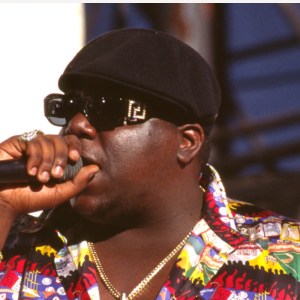Tony Orlando’s “Tie a Yellow Ribbon Round the Ole Oak Tree” spent 11 weeks at No. 1 on Billboard’s Hot 100 chart in 1973. The song became a cultural phenomenon, so much so that radio stations were begging listeners to stop calling their stations. “You’re burning out the switchboard,” WKBW in Buffalo, New York said at the time.
Videos by American Songwriter
The inspiration from the jaunty, pop tune came over a hundred years before the songwriters decided to pen this song in the early ’70s. Nevertheless, the titular symbol is still referenced today thanks to the song’s influence. Uncover the meaning behind “Tie a Yellow Ribbon Round the Ole Oak Tree” 50 years after its release, below.
[RELATED: 50 Years After its Release, The Meaning Behind “Ramblin’ Man” by The Allman Brothers Band]
Behind the Meaning
The symbol of the yellow ribbon dates back to the 1800s. A love story in Reader’s Digest about the Civil War era is what first prompted songwriters L. Russell Brown and Irwin Levine to pen this tune.
“I read it from front to back,” Brown once told the Tennessean. “There was an article … it was about a soldier coming home from Andersonville Prison in the Civil War and he was going to Pennsylvania. He told his girl in a letter, ‘I’ll understand if I should stay on the stagecoach. But if I shouldn’t, tie a big yellow handkerchief on the big oak tree outside of town. And then I’ll know if it’s there, I should get off, but I’ll understand that you found someone else in the last three years.’
“The next morning I drove the 33 miles up to Irwin Levine’s house and went outside behind his home,” he continued. “I told him the story and he said, ‘I’ve got chills up my arms. Tell it again slower.’ So, I told it again, and he said, ‘Handkerchiefs? You blow your nose in them. That’s disgusting.’ I said, ‘What can we do?’ He said, ‘Let’s change it to a ribbon.'”
Their song follows a similar storyline. The lyrics tell the story of a man who spent three long years in prison and is now trying to take stock of his relationship. He uses the yellow ribbon as a barometer for whether or not he is welcome back home.
Despite any trepidation, the man peeks out the bus window and sees 100 ribbons tied around the tree for a heartwarming ending.
Whoa, tie a yellow ribbon ’round the ole oak tree
It’s been three long years, do you still want me?
If I don’t see a ribbon round the ole oak tree
I’ll stay on the bus, forget about us, put the blame on me
If I don’t see a yellow ribbon ’round the ole oak tree
Now the whole damned bus is cheerin’
And I can’t believe I see
A hundred yellow ribbons round the ole oak tree
I’m comin’ home
Cultural Impact
While the symbol of the yellow ribbon has been around since the Civil War, the Library of Congress credits this song as having granted the phrase “cultural ubiquity.” In 1981, the institution received an onslaught of press inquiries about the origin of the yellow ribbon following the Iran Hostage Crisis. The hostages were welcomed home with the symbol.
They combed through a number of sources to try and find the origin of the yellow ribbon’s use in the ’80s—including the John Wayne film She Wore a Yellow Ribbon and another song “Round Her Neck She Wears a Yeller Ribbon (For her Lover Who Is Fur, Fur Away)” – but, they couldn’t land on any iron-clad information.
Finally, they tracked down Penelope Laingen, wife of the U.S. Chargé d’Affaires in Tehran, who reportedly started the trend in the ’80s by tying yellow ribbons around her porch in lieu of taking aim at the Iranians. Her inspiration? This 1973 hit.
Photo by Gettyimages.com
